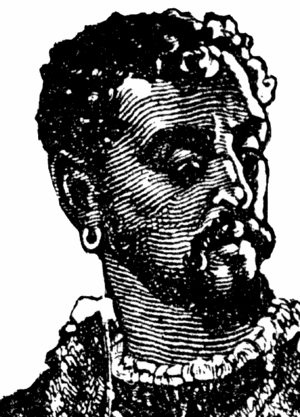William Shakespeare is known to celebrate the use of motifs in his works, reworking the same characters into many different shapes, moods, and sizes while giving them different names and placing them in various plays. King Claudius might have been found palling around with MacBeth, while Feste and Touchstone might have met in the courtyard for some witty banter. Romeo and Othello might have met in group therapy for the broken-hearted, Iago and Cornwall could have been swell delinquent comrades, and Cordelia and Desdemona could have shared nights of “woe-is-me” girl talk. However, Shakespeare’s play Twelfth Night; or What You Will showcases a motif of paralleled characters within the play itself. The play’s two leading ladies, Viola and Olivia, display many of the same characteristics while still maintaining their rooted qualities that make them innately them.
The juxtaposition of Olivia and Viola in Twelfth Night can be analyzed on many levels. On the outer most layer, obvious comparisons can be formulated. Both characters are strong females who hold true to their convictions. They are not easily influenced by other characters and pursue what they wish to within their boundaries. In keeping with society, however, both women maintain their limits and know them well. Viola falls in love with Duke Orsino, but does not pursue his love as she is in disguise. She knows better than to act on her impulses because ulterior forces are at hand. However, Viola demonstrates her inner strength when taking the job as Orsino’s workman. She is determined to keep on with her life despite the pitfalls she has previously experience. These actions make Viola a strong-willed, intelligent woman. Within the same theme, Olivia also displays her strength as a woman in a society driven by men. Unlike Viola, she has the power to do as she wishes and needs not to maintain any type of alternate identity. However, she is quick to brush off Orsino’s love and declare her admiration for Cesario. Olivia is simply a privileged version of Viola who is able to see her desires through.
Olivia and Viola are also quite distinguishably different in many ways when analyzed on the surface. Both characters have suffered great familial loss – Viola believes she has lost her brother, Sebastian, while Olivia seems intent on mourning her late brother and father – yet each woman addresses the situation quite differently. Viola, after a short stint of welled emotion, decides to pick up a new life and get on the best she can. She does not wish to dwell on her brother’s death but rather assumes his identity to keep his legacy alive. In this, Viola pays a moving homage to her brother through a tribute of life and survival. Olivia, on the other hand, believes seven years of mourning are the only ways to pay respects to her post-mortem family members. As a member of a high-class society, Olivia’s actions are nearly expected due to her circumstance, and she is solely convinced that wearing black and sequestering herself for years on end will somehow bring respect to her passed-on family. Each woman is paying homage to her loved ones, but the stark contrast between their approaches appropriately colors both the women’s backgrounds as well as their coping and survival skills.
However, once the first layer of the women’s similarities and differences are peeled away, Shakespeare’s supposed intent of the woman as parallels becomes more in depth. Within the first few pages of reading the play, it becomes apparent that many similarities can be drawn between Viola and Olivia. The first inkling is subliminally suggested from their names. The women’s titles are composed of all of the same letters simply arranged in a different order. Both names are uniquely feminine; in French and Spanish, most words ending in an “a” are undoubtedly female. Though Viola masquerades as a man for most of the play, her feminine qualities shine through and appeal to everyone she encounters. Her swagger might be masculine, but her wit and touch are unmistakably that of a woman’s. Olivia epitomizes the traits of womanhood through her long lacey veils, fanciful dresses and strong-willed yet vulnerable heart. The reader also immediately learns of the death of both the women’s brothers, and context clues hint that they are about the same age. The similarities are unmistakably intentional.
From only the first few pages of the play, the reader is tuned on to subconsciously create a parallel between the characters of Viola and Olivia, and it would be an insult to call this meticulous story-weaving a mere fluke. William Shakespeare intentionally juxtaposes the characters for empathy, comedy and interest. Upon close readings, the similarities between the women are intriguing, while their slight differences set them apart and define each as a definitive role in the play. The influence of one woman on the other and vice-versa serves to only draw the characters closer to one another in terms of romance, camaraderie and both physical and emotional traits. Viola’s positive and enlightening influence on Olivia allows her to open up, express her emotions and free herself of her mourning. She inspires her to find love wherever it may lie and to pursue it as she wishes (however, just not with her). Olivia befriends and eventually falls in love with Viola, who then in turn climbs the social ladder and becomes a respected and admired member of the small community, both as Cesario and as herself. Each woman gives a bit of herself to the other and the final result is two women, alike in their convictions and inspired in their ways.
As Shakespeare plays off of the concept of love and tomfoolery being nearly interchangeable in his comedic plays, the mistaken lust between the characters of Viola and Olivia is dually noted. The audience’s first semblance of Olivia in Viola’s eyes is that of the captain’s description of her. He explains Olivia’s loss of her father and brother, and Viola becomes immediately attracted to the idea of her. She sees a woman who has suffered the same pain that she has and perhaps feels as though she could be of some comfort to her. “O that I served that lady, And might not be delivered to the world Till I had made mine own occasion mellow, What my estate is” (I.II, ll. 38-41). This immediately draws Viola close to Olivia, as they share an unspoken bond of loss despite their social classes. Viola does not feel romantic affection for Olivia but admiration and respect, which Shakespeare often plays off of interchangeably for comedic purposes.
In the same vein, Olivia “falls” for Viola, as her admiration and respect for her character grow and become mistaken for romance. She sees a bolder, braver version of herself in the dashing Cesario, but what attracts her most are Viola’s womanly features and qualities. Her compassion, soft eyes, and rosy face send Olivia into a drunken tizzy as she finds herself vying for the affection of a woman, unbeknownst to her. Viola’s ability to relate to Olivia’s situation, though she never outwardly states her plight to maintain her identity, becomes the turning point of Olivia’s infatuation, as she stumbles to make excuses to see the “man” she loves once more. The underlying theme of homosexuality never becomes an awkward or outwardly stated case, as Shakespeare’s panache for play-writing whirls the story into a melodrama rather than a tragic tale of forbidden love. Olivia is consciously unaware of Viola’s gender, but subconsciously, she perhaps would just like a friend to relate to. In this, she is mistaking Viola’s earnestness and soft touch for romantic love, when what she in fact feels is merely admiration and camaraderie, masked by infatuation.
Shakespeare is able to twist the tale of Viola and Olivia into forms of comedy, pity, and romance while still maintaining the heart of each woman as a parallel of the other. The characters meld and pull apart through ulterior actions and impulsive reactions, much like the juxtaposition of Hamlet and Fortinbras in The Tragedy of Hamlet, Prince of Denmark. Hamlet and Fortinbras have both lost their fathers and proclaim that they will avenge their deaths. Both men are strong-willed and pig-headed princes, but when push comes to shove, only Fortinbras can truly deliver. Shakespeare uses this same type of parallel with Olivia and Viola, though both women come out on top in the end.
However, another character can be added to the mix. Sebastian, Viola’s twin brother, is often seen as interchangeable with Viola and vice-versa. The end of the play boasts a comedic turn of events in which each sibling is confused with the other, wreaking havoc on the play’s remaining characters and Olivia most especially. In the end, Olivia is more than happy to wed Sebastian, a man she has hardly just met – perhaps the most flimsy and comedic aspect of the entire play. This furthers the concept that Shakespeare’s intent is merely to show the many faces of masquerading romance and cases of mistaken love. Olivia concludes that she shows affection for Viola, but will choose to love Sebastian solely due to his gender. In this situation, Viola is the object of mistaken affection and the product of mistaken identity as Orsino “pulls an Olivia” and proclaims his love for Viola. Though his actions have hinted that he has grown quite fond of Cesario, he refuses to act upon his impulses until he has discovered his love is a woman. In this case, Olivia is the lover and Viola, in turn, is the loved.



